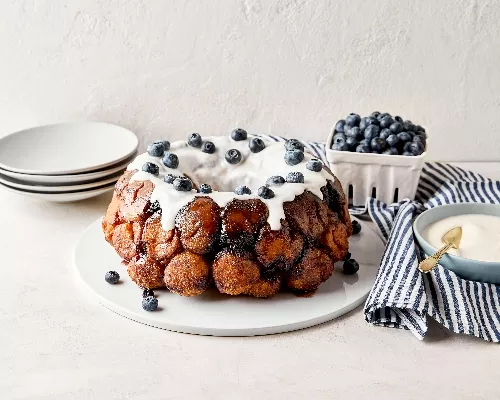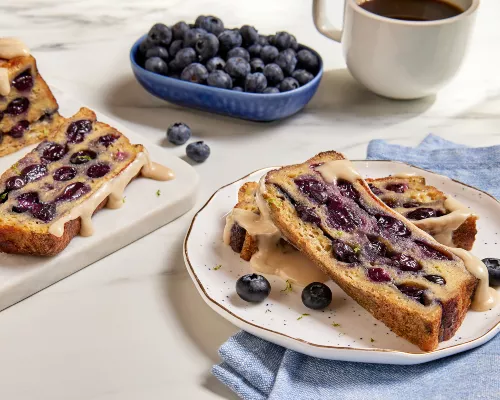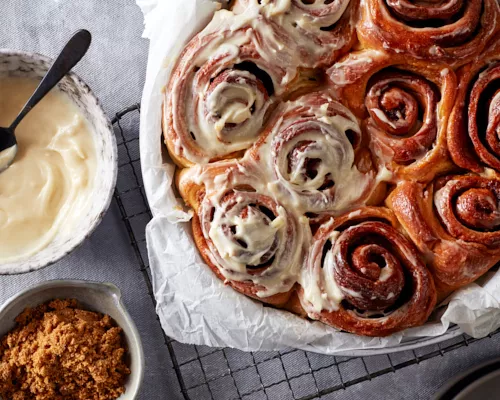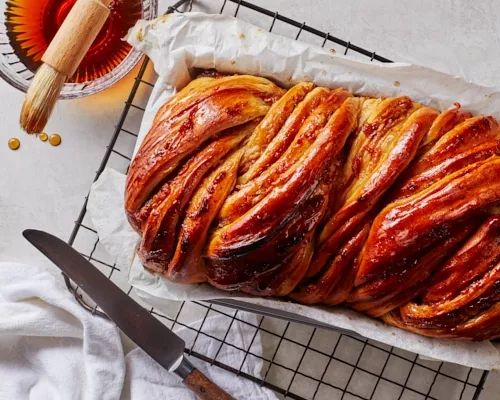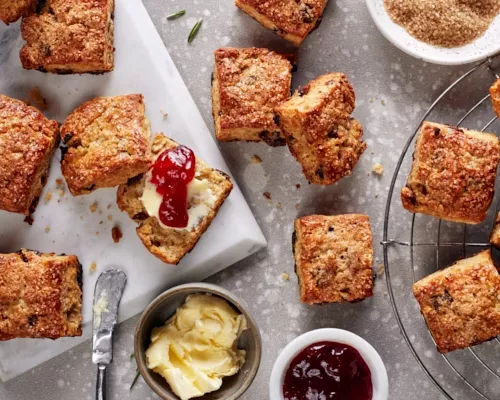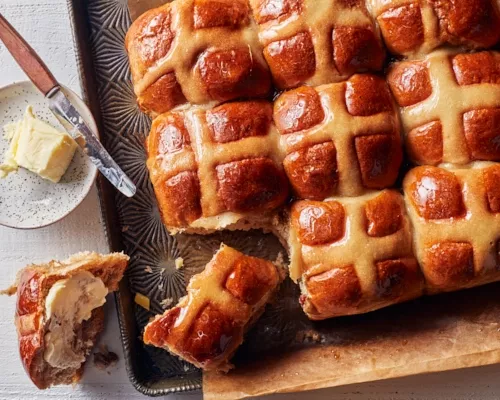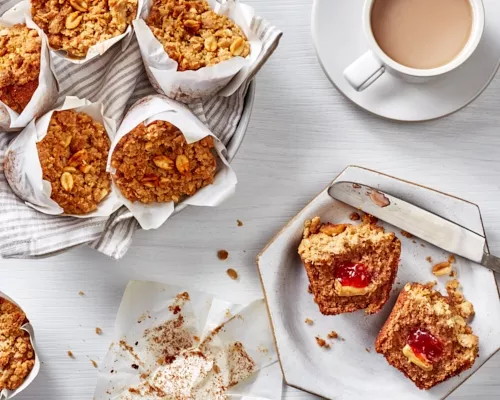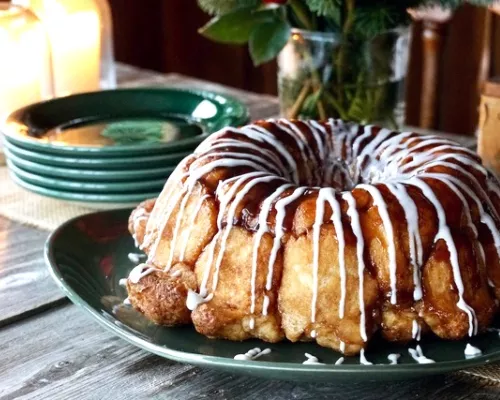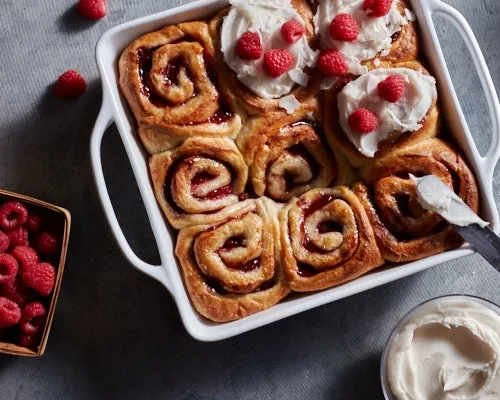Step 1
Preheat oven to 450°F (232°C). Line a baking sheet with parchment paper.
Step 2
In a small measuring cup pour in the boiling water and add one Earl Grey tea bag; steep for 4 minutes. After the alloted time, squeeze tea bag before discarding. Allow tea to cool.
Step 3
In a large bowl whisk together flours, the Redpath® Golden Yellow Sugar, baking powder, baking soda, salt, and the tea leaves from the remaining Earl Grey tea bags.
Step 4
Add in the room temperature butter. With hands or pastry blender cut the butter into the dry ingredients until mixture resembles wet sand. Make a well by forming the dry ingredients into a mound and creating a deep depression in the centre.
Step 5
In a small bowl or measuring cup, whisk together the buttermilk, the cooled Earl Grey tea, egg, and vanilla extract until well combined. Pour the buttermilk mixture into the well of the dry ingredients. With a rubber spatula, quickly combine mixture until it just comes together.
Step 6
Lightly dust work surface with flour. Transfer contents onto the floured work surface. Fold the dough over on itself about 2 or 3 times. Gently pat together. Lightly dust rolling pin and roll dough to about 1-inch thick. With a 2½-inch metal round cookie cutter, cut out as many rounds as possible. Gently pat together the scraps, roll, and cut out the remaining rounds.
Step 7
Place scones about an inch and a half apart on the prepared baking sheet.
Step 8
Whisk together the egg and heavy cream. With a pastry brush, lightly brush tops with egg wash.
Step 9
Place into the preheated oven. Reduce heat to 425°F (218°C). Bake for 12 to 15 minutes or until tops are golden in colour. Cool slightly on pan and carefully remove onto a wire cooling rack to cool completely. Serve immediately.
.jpg)
*Use a high quality Earl Grey tea to ensure a flavourful scone that tastes like the tea used.
*Steeping tea for longer than the allotted time may produce a tea with a bitter aftertaste.
*Experiment with other tea flavours by switching out the Earl Grey with your favourite tea.
*If buttermilk is unavailable, a good substitute is to stir 1 tablespoon (15 millilitres) of white vinegar or lemon juice into 1 cup (240 millilitres) of milk. Allow to sit and thicken; 5 to 10 minutes. Proceed with the recipe, as usual, using the necessary amount of buttermilk required.
*Scones can be frozen for up to 2 months after they have been cut out. Place cut scones onto a baking sheet and freeze. Remove frozen scones and place into a large freezer-safe bag, airtight container, or individually wrap with plastic wrap. Scones can later be baked from frozen. Add about 2 to 3 minutes to the baking time when doing so.
*Completely cooled scones can be stored in the same way as unbaked scones. Allow to thaw at room temperature for about an hour before reheating them in a preheated (350°F/ 177°C) oven or toaster oven for 5 to 10 minutes. Alternatively, microwave scones at 15 second intervals until heated through.
Corresponding Recipe: Devonshire-style Cream


